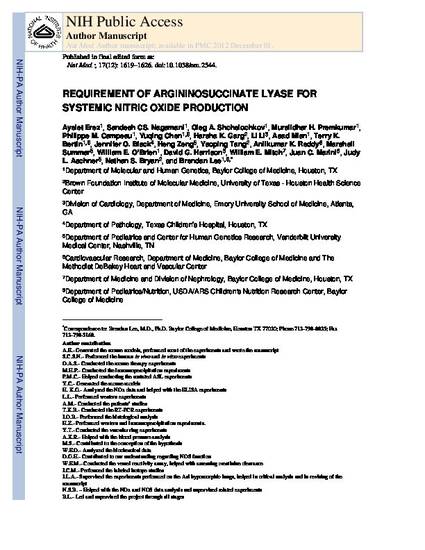
Nitric oxide (NO) is crucial in diverse physiological and pathological processes. We show that a hypomorphic mouse model of argininosuccinate lyase (encoded by Asl) deficiency has a distinct phenotype of multiorgan dysfunction and NO deficiency. Loss of Asl in both humans and mice leads to reduced NO synthesis, owing to both decreased endogenous arginine synthesis and an impaired ability to use extracellular arginine for NO production. Administration of nitrite, which can be converted into NO in vivo, rescued the manifestations of NO deficiency in hypomorphic Asl mice, and a nitric oxide synthase (NOS)-independent NO donor restored NO-dependent vascular reactivity in humans with ASL deficiency. Mechanistic studies showed that ASL has a structural function in addition to its catalytic activity, by which it contributes to the formation of a multiprotein complex required for NO production. Our data demonstrate a previously unappreciated role for ASL in NOS function and NO homeostasis. Hence, ASL may serve as a target for manipulating NO production in experimental models, as well as for the treatment of NO-related diseases.
Available at: http://works.bepress.com/asad_mian/23/

This work was published before the author joined Aga Khan University.